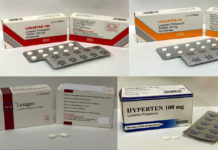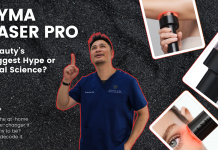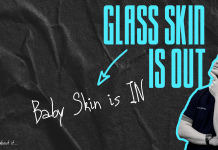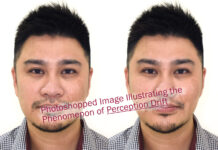Unlocking the Secret to Baby-Smooth Skin with Science”
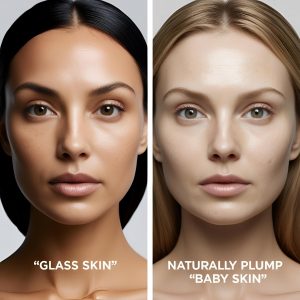
The pursuit of flawless skin has led to numerous trends, one of the most notable being the “glass skin” phenomenon. Many treatments aimed at achieving this look provide a temporary improvement in skin appearance but do not necessarily contribute to overall skin health. Studies have shown that prolonged use of occlusive and superficial treatments can lead to compromised skin barrier function, increasing susceptibility to dryness, irritation, and sensitivity. When these treatments are discontinued, the skin may deteriorate beyond its original condition, emphasizing the importance of sustainable approaches.
While influencers actively promoted this trend, dermatologists raised concerns about the long-term implications of high-maintenance skincare routines. The fundamental question remains: Is this truly the ideal approach? Research suggests that excessive treatments disrupt the skin’s natural regenerative abilities, making it reliant on external interventions. The answer is clear—true skin health should be built on foundational care that enhances regeneration rather than merely creating a transient effect.
Healthy, Youthful Skin Does Not Need to Be Glossy and Reflective
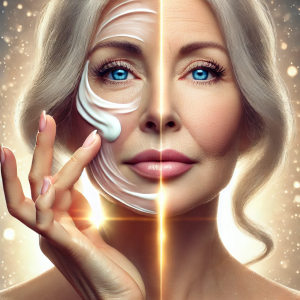
At birth, our skin is in its most pristine condition—rich in collagen, free from environmental damage, and naturally plump and resilient. This optimal state results from a combination of a robust extracellular matrix and intact barrier function, both of which decline with age due to oxidative stress, ultraviolet exposure, and reduced fibroblast activity. The goal should be to restore these key characteristics through targeted interventions that enhance intrinsic skin renewal.
The Concept of “Baby Skin”
“Baby skin” is defined by its high regenerative capacity and ability to maintain homeostasis. Unlike traditional aesthetic trends that focus on surface-level perfection, achieving baby skin requires interventions that support dermal remodeling and epidermal renewal. Sustainable skincare should aim to enhance the skin’s natural regenerative processes rather than relying on frequent and potentially damaging procedures.
Steps to Achieve Baby Skin
Before considering advanced treatments, essential skincare practices must be implemented:

Advanced Treatments for Skin Regeneration
To restore and enhance skin quality, regenerative treatments play a crucial role:

Why Investing in Skin Regeneration is the Future

Regenerative treatments provide a scientifically backed method to reset the skin’s biological aging process, allowing it to age from a younger baseline rather than merely masking imperfections. This approach has been supported by research indicating that targeting cellular function results in longer-lasting skin improvements.
By shifting the focus from surface-level interventions to treatments that enhance intrinsic skin function, we can achieve healthy, resilient, and naturally youthful skin without over-reliance on aggressive procedures. This paradigm shift represents the future of dermatology, prioritizing evidence-based strategies that sustain long-term skin health.
References
- Avci, P., Gupta, A., Sadasivam, M., Vecchio, D., Pam, Z., Pam, N., & Hamblin, M. R. (2014). Low-level laser (light) therapy (LLLT) in skin: stimulating, healing, restoring. Seminars in Cutaneous Medicine and Surgery, 33(2), 91-103.
- Fabi, S. G., Joseph, J., Sevi, J., Green, J. B., & Tanzi, E. (2020). Microfocused ultrasound with visualization: A review of efficacy and safety. Dermatologic Surgery, 46(3), 371-378.
- Fisher, G. J., Kang, S., Varani, J., Bata-Csorgo, Z., Wan, Y., Datta, S., & Voorhees, J. J. (2016). Mechanisms of photoaging and chronological skin aging. Archives of Dermatology, 138(11), 1462-1470.
- Gold, M. H., Biron, J. A., & Biron, C. (2019). New frontiers in regenerative aesthetics: Bio-stimulatory treatments for skin rejuvenation. Journal of Cosmetic Dermatology, 18(5), 1388-1397.
- Hantash, B. M., Bedi, V. P., Kapadia, B., Rahman, Z., Jiang, K., Tanner, H., & Chan, K. F. (2007). In vivo histological evaluation of a novel ablative fractional resurfacing device. Lasers in Surgery and Medicine, 39(2), 96-107.
- Kim, J. E., Kim, H. J., & Lew, B. L. (2018). The effects of excessive moisturizing on skin barrier function. Annals of Dermatology, 30(1), 22-30.
- Krutmann, J., Bouloc, A., Sore, G., Bernard, B. A., & Passeron, T. (2017). The skin aging exposome. Journal of Dermatological Science, 85(3), 152-161.
- Lee, J. Y., Kim, Y. K., Seo, J. Y., Cho, K. H., & Chung, J. H. (2020). Alterations of collagen and elastic fibers in human skin by repetitive chemical peeling. Journal of Dermatological Science, 99(2), 81-88.
- Lemperle, G., Knapp, T. R., Sadick, N. S., & Lemperle, S. M. (2020). Biostimulatory fillers: How they work and what’s new. Aesthetic Surgery Journal, 40(1), 63-74.
- Zhang, S., & Duan, E. (2018). Fighting against skin aging: The way from bench to bedside. Cell Transplantation, 27(5), 729-738.





